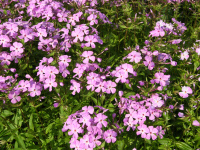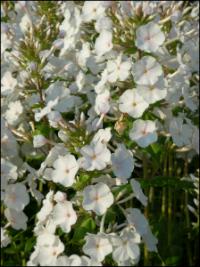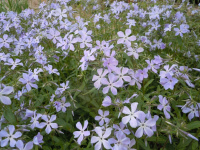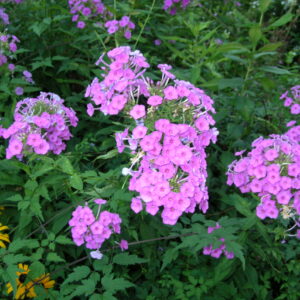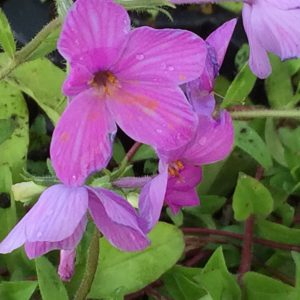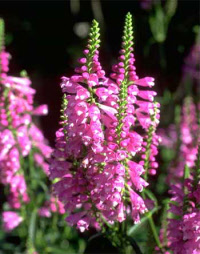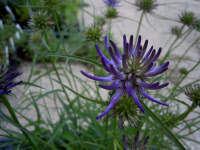Perennials & Biennials
Showing 353–360 of 511 results
-
Phlox buckleyi Sword leaf Phlox Z 4-8
Sprays of mauve, pink or purple in May-June
Sprays of mauve, pink or purple in May-June
Size: 8- 18” x 12”
Care: sun to part shade in any soil
Native: Virginia & West VirginiaDescribed and named by Edgar Theodore Wherry (1885-1982), unflagging naturalist in the finest tradition of wide interests in the natural world. After getting his Ph.D in 1909 in geology-mineralogy he became Asst. Curator of Minerals for the Smithsonian. In 8 years he transferred to the USDA Bureau of Chemistry, becoming its principal chemist. He left in 1930 to accept an appointment as botany professor at U. Penn., where he taught botany and ecology for 25 years.
**LISTED AS OUT OF STOCK BECAUSE WE DO NOT SHIP THIS ITEM. IT IS AVAILABLE FOR PURCHASE AT OUR RETAIL LOCATION.
-
Phlox carolina ‘Miss Lingard’ Wedding phlox Z 5-8
bridal white blossoms with pink eyes
True to its common name, this 3′ tall selection bears bridal white blossoms with pink eyes from June into August
Size: 4' x 18"
Care: full sun to part shade in moist to moist well-drained soil, resistant to powdery mildew
Native: Cultivar of native in eastern and central U.S.
Wildlife Value: attracts butterflies and hummingbirdsPhlox is Greek meaning “flame.” The species carolina in gardens before 1889 and cultivar ‘Miss Lingard’ before 1905.
-
Phlox divaricata Wild sweet William Z 3-8
Bright lavender flowers, tubes with flat lobes, welcome spring. One of internationally known garden designer Piet Oudolf’s 100 “MUST HAVE” plants, Gardens Illustrated 94 (2013)
Bright lavender flowers, tubes with flat lobes, welcome spring. One of internationally known garden designer Piet Oudolf’s 100 “MUST HAVE” plants, Gardens Illustrated 94 (2013)
Size: 12" x 10"
Care: part shade in moist, well-drained soil.
Native: Quebec to Wisconsin south to North Carolina & Alabama
Wildlife Value: attracts hummingbirds
Awards: Received England’s Royal Horticultural Society Award of Merit.Phlox is Greek meaning “flame.” 1st introduced to gardens by Quaker explorer and nurseryman John Bartram (1699-1777) around 1746. Recommended by Gertrude Jekyll, mother of mixed perennial borders, in 1908.
-
Phlox paniculata Garden phlox Z 4-8
Magenta, fragrant flowers from July to September – the classic farm garden flower. Deadhead for rebloom.
Magenta, fragrant flowers from July to September – the classic farm garden flower. Deadhead for rebloom.
Size: 4' x 2' spreader and self-seeder
Care: full sun, part shade in moist or moist well-drained soil.
Native: Pennsylvania west to Arkansas and Missouri. South to Alabama.
Wildlife Value: numerous butterflies relish Phlox’s nectar.Phlox is Greek meaning flame. A farmyard plant in North America. One of the 1st plants collected in No. America – grown in Tradescant the Elder’s (1570-1638) South Lambeth nursery in 1634. Offered for sale in Bartram Garden’s 1783 Broadside, America’s 1st plant catalog.
-
Phlox stolonifera syn. P. reptans Creeping phlox Z. 4-9
Flowers white to pink to purple in spring
OUT OF STOCK
Flowers white to pink to purple in spring
Size: 6-12” x spreads by stolons (stems that root on soil surface
Care: sun to shade in most any soil
Native: Appalachian Mountains
Size: Very useful groundcover due to its willingness to grow anywhereCurtis’s Botanical Magazine 1801: discovered by John Fraser in Georgia 1786 and sent to Sims in 1801. ALSO COLLECTED BY Michaux about same time but Sims described 1st ans so received priority. Sims’ described a form with violet corolla from Blue Ridge Mtns. A purple colored form which is more wide-spread named P. stolonifera crassifolia by Don. A “showy-flowered Phlox which has long been in cultivation combines the characters of P. subulata and P. stolonifera in such a striking way as to clearly indicate its origin as a hybrid between these two species.” Given various names incl/ P. procumbens, P verna and P. amoena. P. 76
-
Physotegia virginiana Obedient plant Z 3-9
Purplish red to rosy pink spikes of hooded snapdragons
OUT OF STOCK
Purplish red to rosy pink spikes of hooded snapdragons July to September
Size: 3' x 3' and spreading
Care: sun in moist to moist well-drained soil. Deer resistant and tolerates Walnut toxins
Native: Quebec to Manitoba, TX to GA, Wisconsin native
Wildlife Value: attracts hummingbirdsCollected before 1750. Called Obedient plant because if you push a flower it will remain in place temporarily – like a child who stays in the corner until you’re not looking.
-
Phyteuma scheuchzeri Horned rampion Z 5-8
globe-shaped, blue-purple flowers with petals resembling horns
Clusters of globe-shaped, blue-purple flowers with petals resembling horns or curved spikes bloom in June-July. “…(W)hen exposed only to the morning sun, will keep long in bloom.” Curtis’ Botanical Magazine 1815-6.
Size: 8-12” x 12”
Care: sun in well-drained soil
Native: Mountains of Switzerland and “Piemont.”Collected in late 1700’s. The name Phyteuma is from Greek meaning “a plant.”
-
Pimpinella major ‘Rosea’ Greater burnet, Cow parsley 5-8
Like Queen Ann’s lace but fear its invasion? Here’s a look-alike, pink perennial that won’t take over. It’s many branches, with lacy foliage, each with a pink umbel on an upright stem bloom in early to mid-summer depending on location.
Like Queen Ann’s lace but fear its invasion? Here’s a look-alike, pink perennial that won’t take over. Its many branches, with lacy foliage, each with a pink umbel on an upright stem bloom in early to mid-summer depending on location.
Size: 3’-4’ x 2’
Care: sun to part-shade in moist well-drained soil
Native: Europe and Caucasus
Wildlife Value: Rich in both pollen and nectar it attracts bees and butterflies.First described in literature in 1812 by German botanist David Heinrich (1760-1846) in Nouvelle Flore des Environs de Paris. He named it Pimpinella rubra. Since then botanists decided it’s a cultivar of the white-flowered Pimpinellla major and renamed it.

